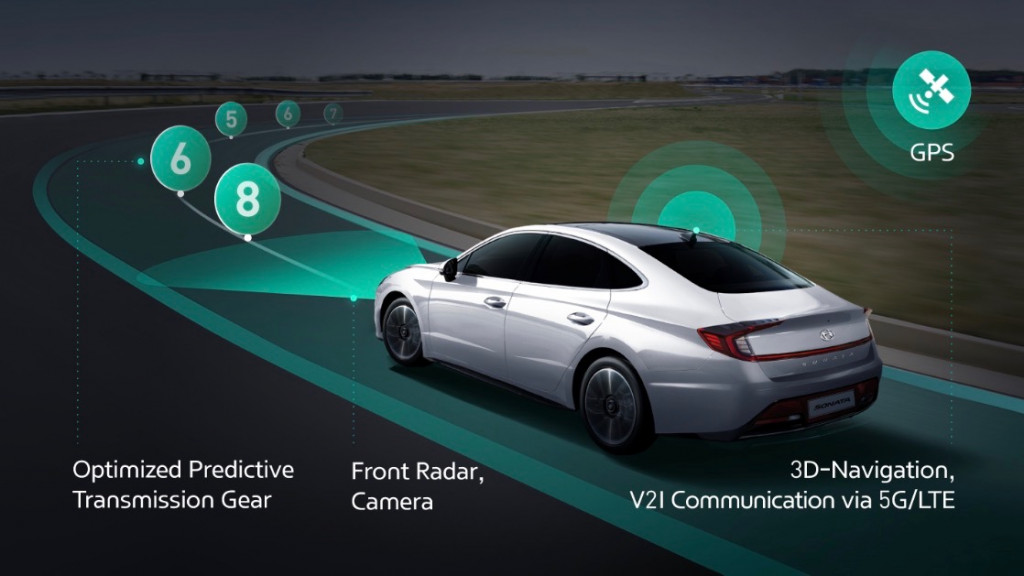Even as it moves to launch more electric cars, Hyundai is looking for ways to wring more efficiency from internal-combustion powertrains.
The automaker has developed what it calls an "Information and Communication Technology (ICT)" transmission-control system that uses both GPS real-time traffic data, and onboard sensors to choose the optimal gear. The technology will be used in future vehicles from both Hyundai and sibling brand Kia.
While Rolls-Royce's "satellite-aided" transmission uses GPS data to determine gearshifts, the Hyundai ICT is likely the first example of a major automaker also incorporating traffic data into transmission-control software.
Hyundai's system relies on sources of data already available in many current cars. The embedded navigation system provides maps and real-time traffic information. Radar units and cameras from a car's adaptive cruise control monitor the speed and distance between vehicles, and locate lane markings, respectively.
This data is used in a variety of ways. When a long slowdown is predicted, and the car in front is decelerating at a consistent speed, the system will shift the transmission into neutral to improve fuel efficiency, according to Hyundai.
When tested on a curvy road, frequency of shifts in corners with ICT was 43% less than in a vehicle without the system, according to Hyundai. Shifting while cornering can upset the balance of a car. ICT also significantly reduced the frequency of brake applications by 11%, according to Hyundai.
When merging onto a highway, ICT can automatically switch the transmission into Sport mode to provide more robust acceleration, Hyundai said.
The system can also take greater advantage of engine braking on deceleration, Hyundai said, bringing gasoline and hybrid cars a bit closer to the "one-pedal driving" already enjoyed by electric-car drivers.

Hyundai and Kia ICT transmission
Hyundai also noted that ICT is "in line" with future autonomous-driving technologies.
By connecting the transmission to a car's onboard sensors and other things (Hyundai said future versions of ICT will be able to interface with traffic lights), the system points the way toward easier integration of internal-combustion powertrains with autonomous-driving tech.
It's widely assumed that autonomous driving and electric powertrains will go hand in hand, but Hyundai's ICT might help make any future autonomous hybrids and gasoline cars more efficient.
In a similar vein, Hyundai previously tested "platooning" tech for long-haul trucks as a way to save fuel.
Platooning involves running vehicles close together to reduce turbulent air, giving the vehicles "clean air" to drive through. This reduces drag and improves fuel efficiency. Hyundai used vehicle-to-vehicle communication to coordinate the acceleration and braking of a group of trucks in order to maintain a set distance.
The transmission tech in Hyundai's latest hybrid—the 2020 Sonata—aims to balance fun with efficiency.
The 2020 Sonata Hybrid uses a dual-clutch transmission, which should make the powertrain more responsive than in other hybrids. Active Shift Control, which uses a sensor to better match electric motor and engine speed, is expected to provide quick shifts and greater efficiency as well.











